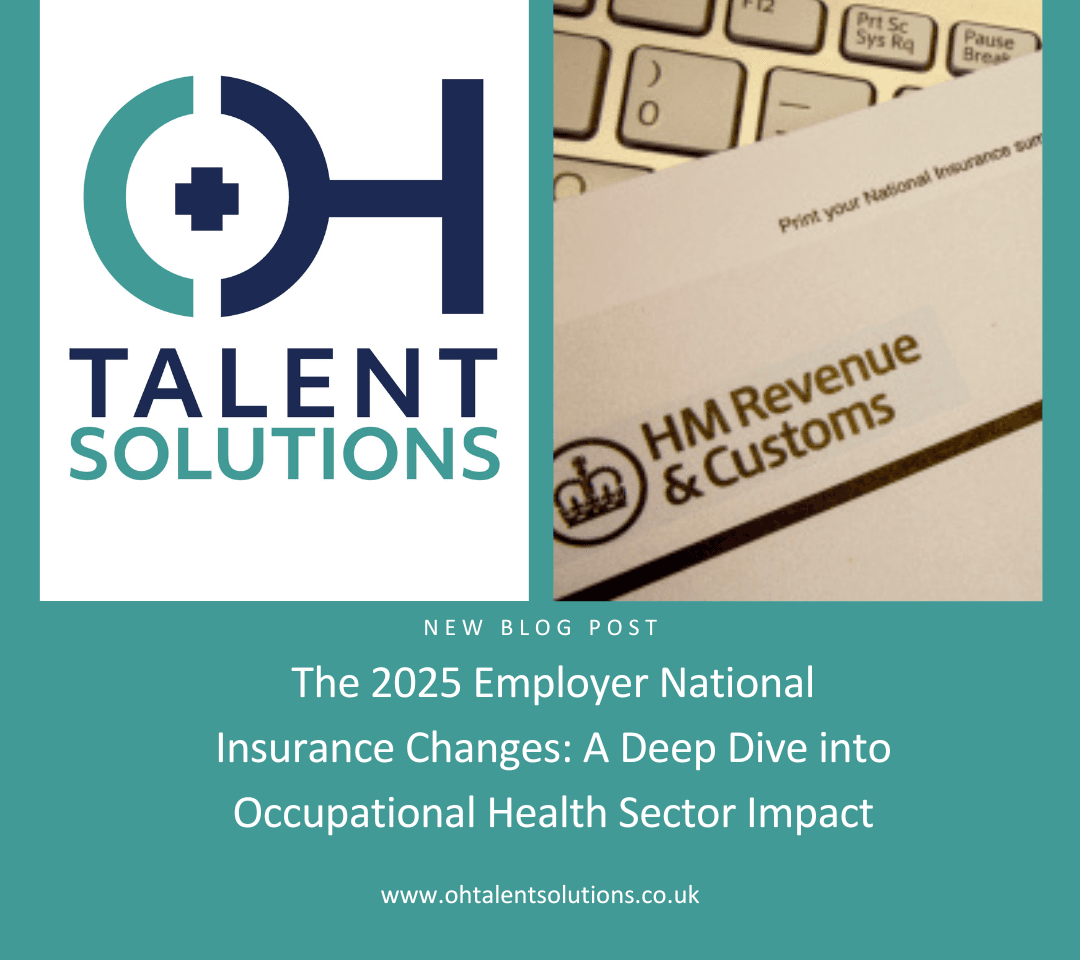The 2025 Employer National Insurance Changes: A Deep Dive into Occupational Health Sector Impact

Occupational Health Employer National Insurance
The occupational health sector is experiencing unprecedented changes as we navigate through the latest employer National Insurance (NI) modifications. According to recent data from the Office for National Statistics, these adjustments are creating ripple effects throughout the Occupational Health Employer landscape.
Understanding the Changes
Recent changes to employer National Insurance contributions, as outlined by HMRC’s latest guidance [source: gov.uk], have introduced significant adjustments to how organisations manage their staffing budgets. The Institute for Employment Studies reports that healthcare sectors, including occupational health, are among the most impacted by these modifications.
Impact on Occupational Health Services
Recruitment Landscape Transformation
Research from the Chartered Institute of Personnel and Development (CIPD) indicates:
– 67% of healthcare organisations are reassessing their recruitment strategies
– 42% are exploring alternative staffing models
– 31% are increasing their focus on retention programmes
Salary and Benefits Evolution
The NHS Employers‘ latest workforce bulletin highlights several trends:
– Organisations implementing creative compensation structures
– Enhanced emphasis on non-monetary benefits
– Growing adoption of flexible working arrangements
Market Response and Adaptation
According to the Faculty Of Occupational Health Medicine latest survey:
• 73% of OH providers are reviewing their staffing models
• 58% are investing in retention strategies
• 45% are exploring hybrid working arrangements
The Society of Occupational Medicine reports that organisations are responding through:
– Strategic workforce planning
– Enhanced professional development opportunities
– Innovative recruitment approaches
Industry-Specific Solutions
Drawing from our two decades of experience in OH recruitment, we’re observing several effective strategies:
1. Flexible Staffing Solutions
– Implementation of mixed permanent and contract roles
– Adoption of remote and hybrid working patterns
– Development of skill-sharing programmes
2. Cost-Effective Recruitment
– Streamlined recruitment processes
– Enhanced use of professional networks
– Focus on long-term retention strategies
Looking Ahead: Industry Projections
The Health and Safety Executive’s latest workplace health statistics suggest that demand for occupational health services continues to grow, despite financial pressures. This creates an interesting dynamic where organisations must balance cost management with service quality.
Practical Steps for Employers
1. Review Current Structures
– Audit existing staffing arrangements
– Assess cost implications
– Identify efficiency opportunities
2. Develop Adaptation Strategies
– Create flexible staffing models
– Implement retention programmes
– Enhance value propositions
3. Future-Proof Your Organisation
– Build sustainable recruitment strategies
– Invest in workforce development
– Maintain service quality standards
Conclusion
While the employer National Insurance changes present challenges, they also offer opportunities for innovation in occupational health recruitment and service delivery. Organisations that adapt strategically will maintain their competitive edge in attracting and retaining top talent.
Need Expert Guidance?
At OH Talent Solutions, we understand these challenges intimately. With our specialist knowledge and extensive network in occupational health recruitment, we’re here to help you navigate these changes effectively.
Contact our expert team at 02393 871 484 or email info@ohtalentsolutions.co.uk for tailored recruitment solutions that account for the current market dynamics.
—
References and Further Reading:
– Office for National Statistics Employment Statistics 2025
– HMRC Employer National Insurance Guidance
– CIPD Healthcare Sector Report 2025
– NHS Employers Workforce Bulletin
– Society of Occupational Medicine Industry Survey 2025
– Health and Safety Executive Workplace Health Statistics




